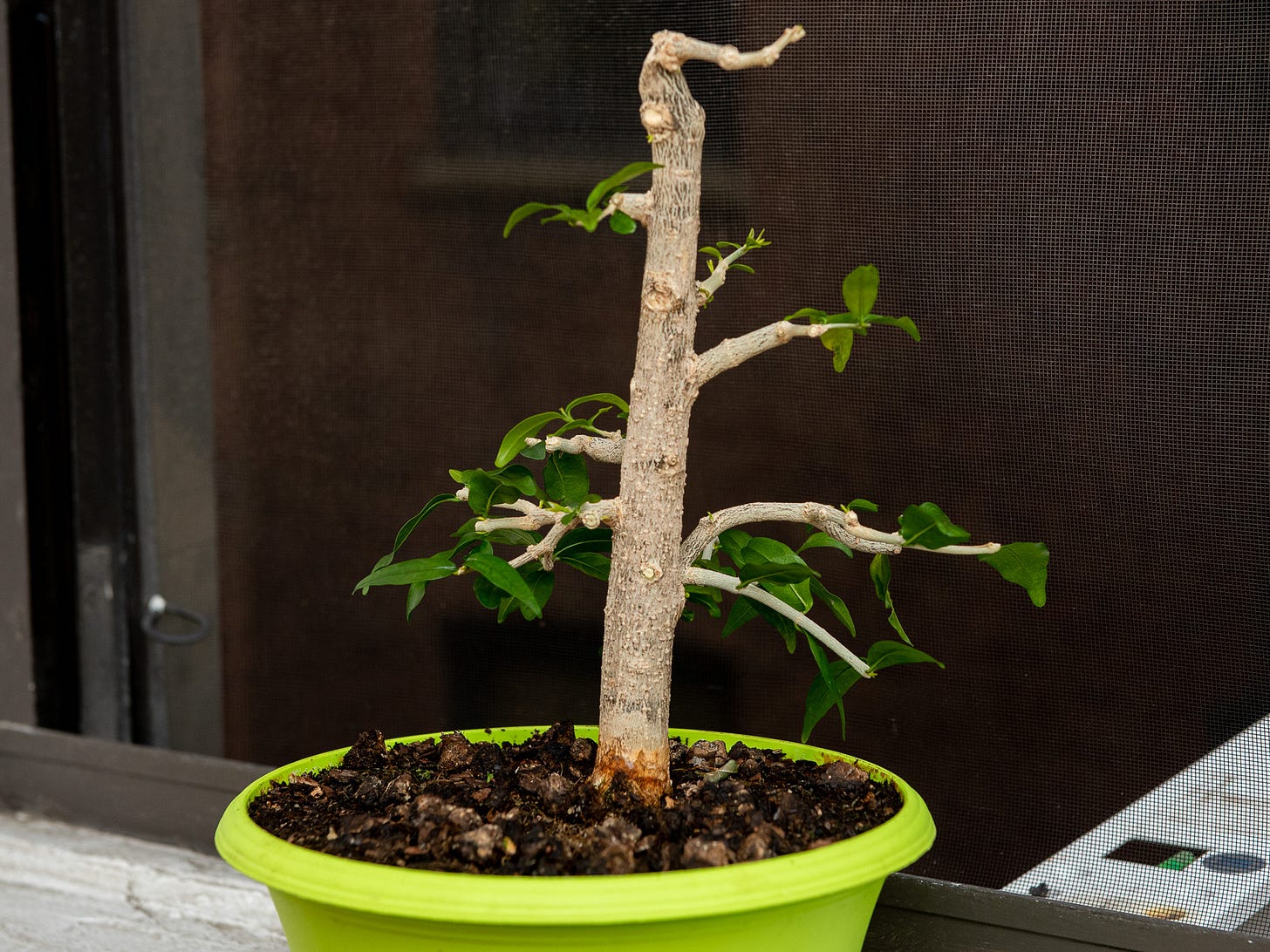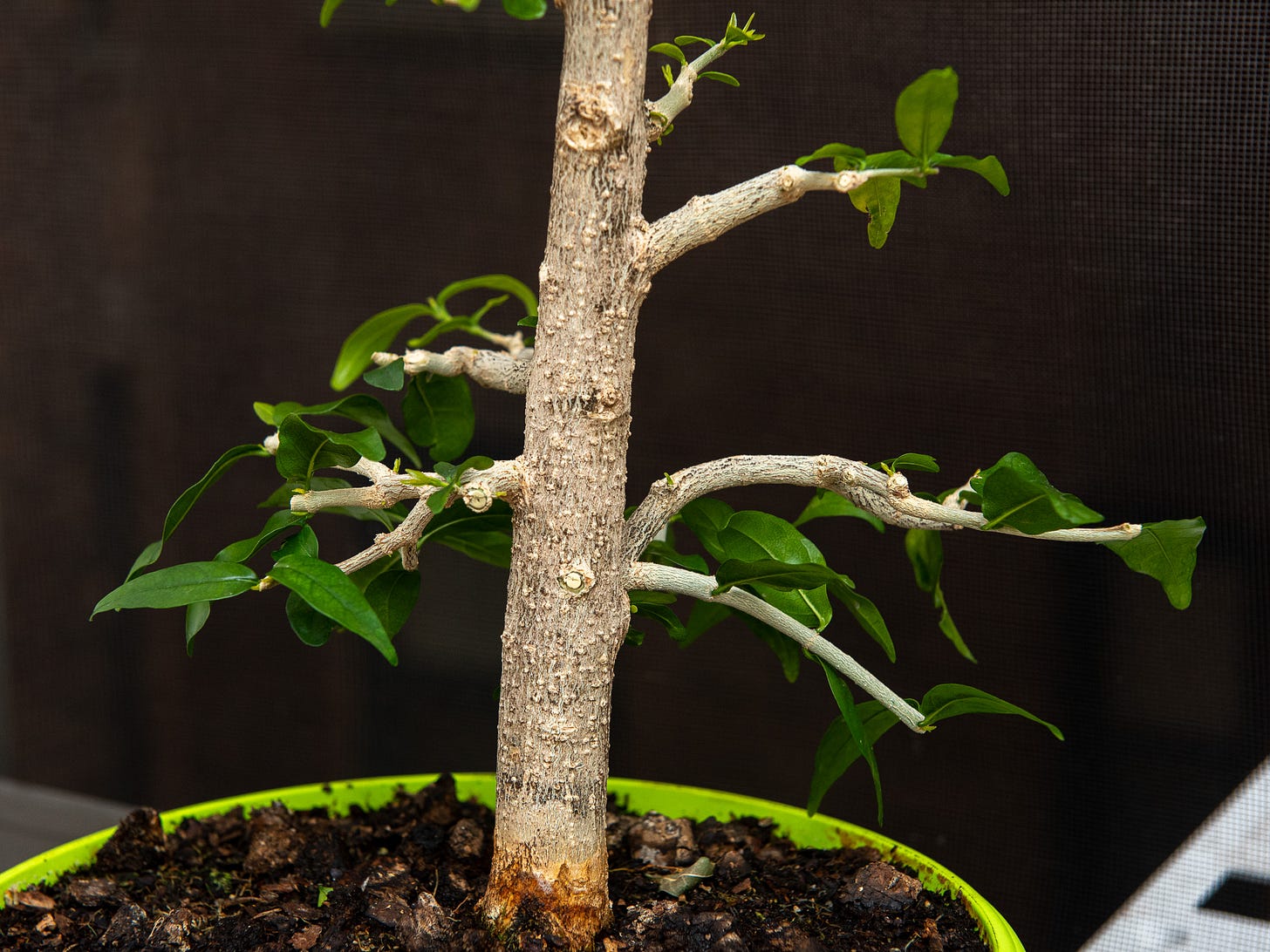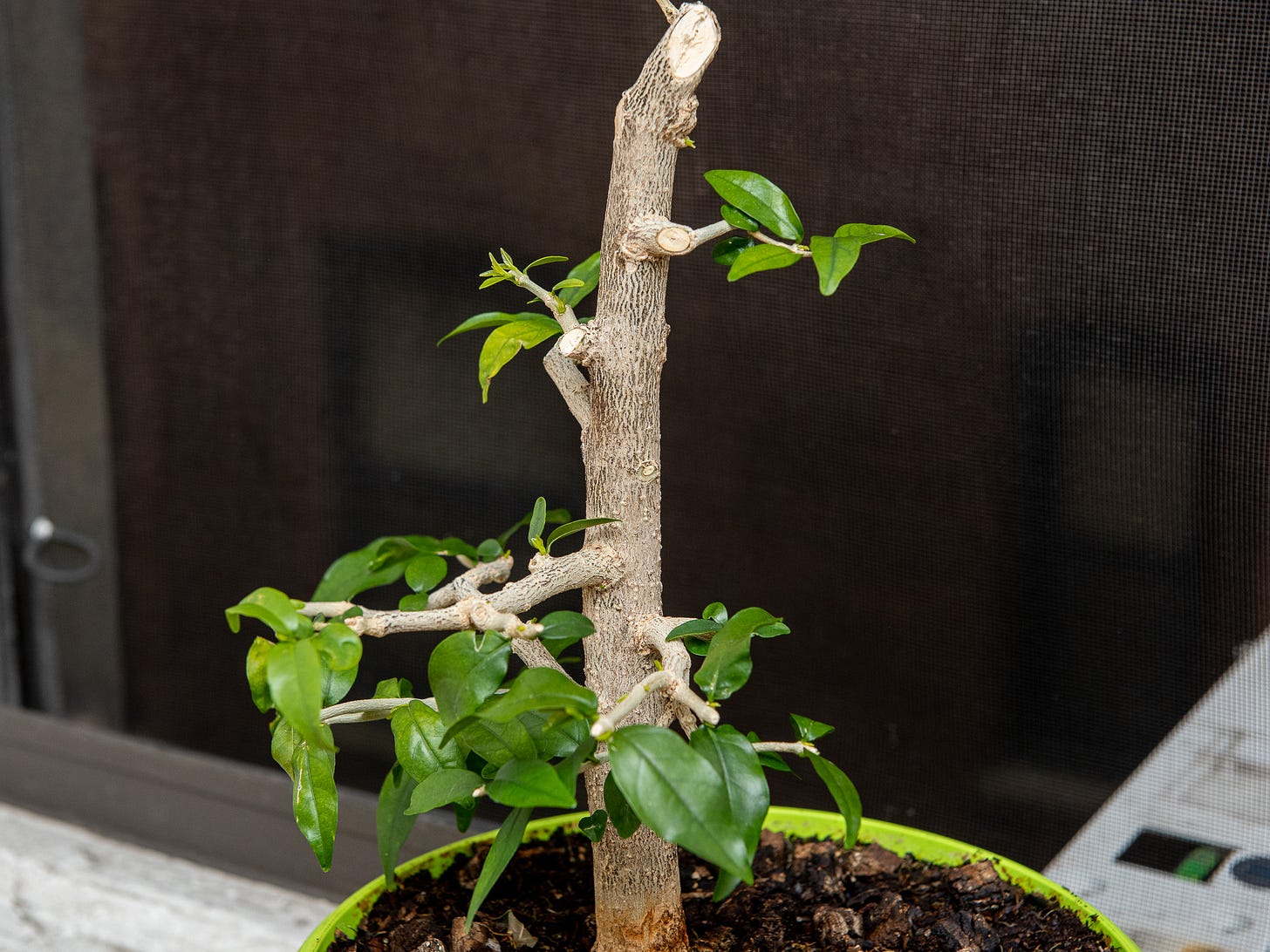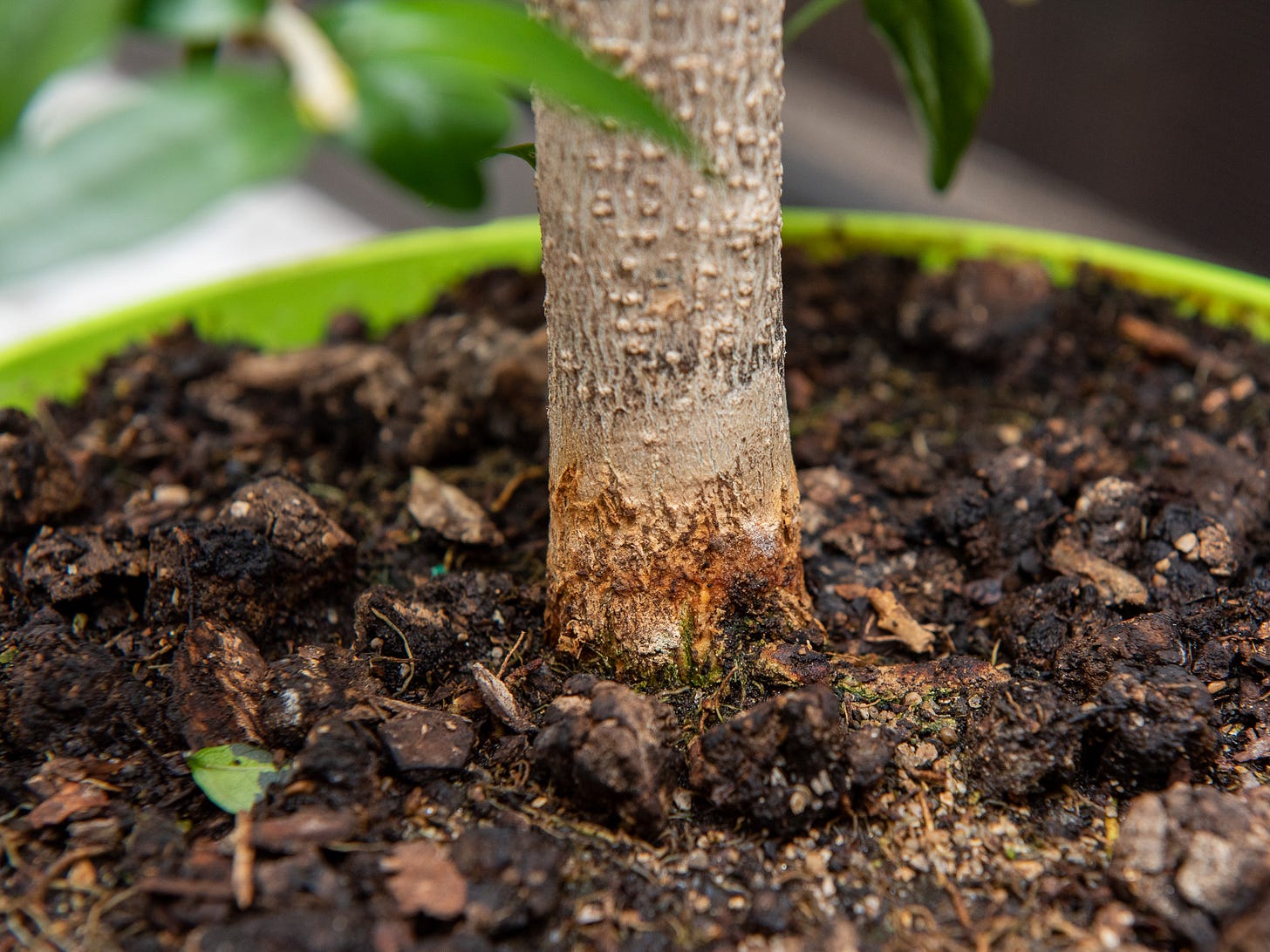I don’t even have a “before” picture.
It was the Saturday after Thanksgiving and my hardest choice for the day was deciding which John Carpenter movie to watch later. I was checking in with my tropicals and found myself lingering on this water jasmine. It had been growing out for months, yet for all the ways it was crowding out its neighbors, it wasn’t blooming. Wrightia religiosa—even the name sounds like a spell—is a nice tree to work with, and its flowers are instant aromatherapy.
Before I knew it I was sanitizing my shears and pruning the tree to bits.
The formalized nature of bonsai aesthetics means that many of my pruning decisions are made for me. Even if you go on autopilot and only follow the most basic rules, your tree will come out looking decently bonsai-like. Clip branches that cover the trunk. Reduce all junctions to two branches. For an upright tree like this one, the first and heaviest branch should appear on the left or right side one-third of the way of the trunk. Then a thinner branch on the opposite side and one thinner still towards the back to create depth. Rinse and repeat.
But I wasn’t just on autopilot. I was in the zone. The branches laid themselves out for me. Answers to the harder questions came easy; I just knew which buds I needed and which I could lose.
And I think the end result looks decent.
I have good established main branches that are ready to grow secondary twigs. They’re beginning to look proportionate and the tree has a clear front. It’s becoming more than a stick in a pot.
You may have heard of the idea of “flow,” which is more or less the academic term for being in the zone and the benefits it brings to you and your work. Flow is focused, coordinated, and capable. Lions on the savannah. It’s what soylent-swigging biohacker types aspire towards.
An entire pop psychology industry has emerged to teach us the secrets of attaining flow states, such as “eliminate distractions” and “challenge yourself.” Yes, I was blown away too. Other than the tautological (“set a goal,” really?) I don’t think I did. All I know is, last year, wiring a tree felt like an existential high-wire act. This pruning job felt like a natural extension of what I’ve been learning.
Of course now all I can see are the flaws, like this awkward stretch of the tree’s starboard side, which is devoid of branches. I’ll have to pray some dormant bud activates there and towards the back of the tree—somewhere other than opposite another branch, which would form bulges on the trunk. The lowest branch on the port side of the tree is doing just that—it’s actually several branches that I’m hoping to fuse together somehow.
Maybe I wasn’t in a flow state after all. Or my flow state didn’t lead to any particular excellence. But I think a good flow state is its own reward.
Here’s a shot of the nebari just for fun. Lots of good texture on the bark and promising flare beneath the soil. I’ll repot the tree in a few months to see what I’m working with. The roots may be a tangled mess. The base of the trunk may demand a different viewing angle than what I’ve selected. Who knows, the whole tree could be a bust and my clumsy efforts will be wasted.
This, too, will be progress.
Tree reading
An experimental blight-resistant breed of chestnut tree from the USDA may be ready for testing soon—encouraging news for this endangered American native! [Federal Register]
Meanwhile in New York City, private security firms are nailing RFID tags into trees as a means of public surveillance. [Gothamist]





